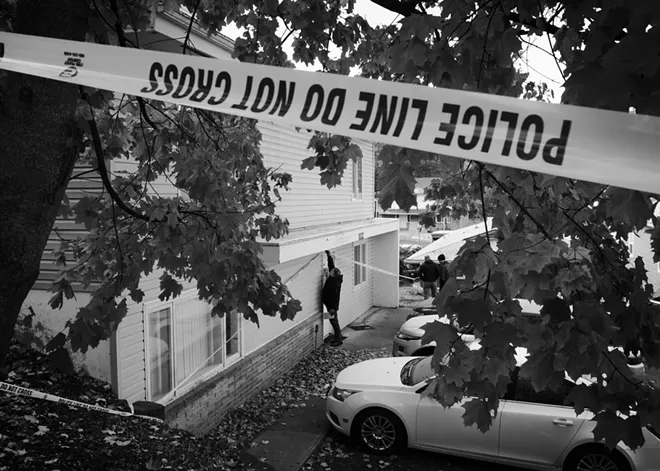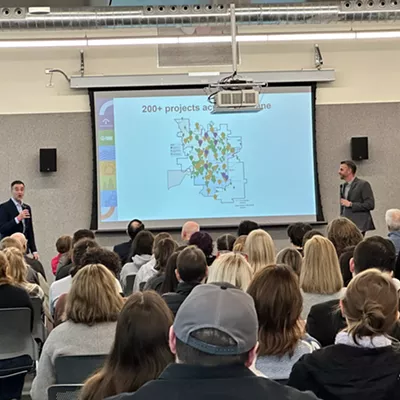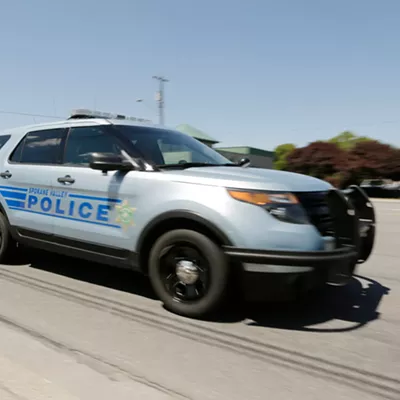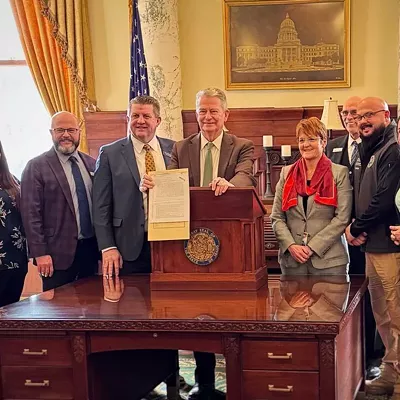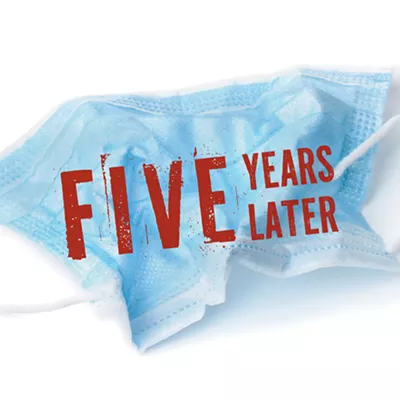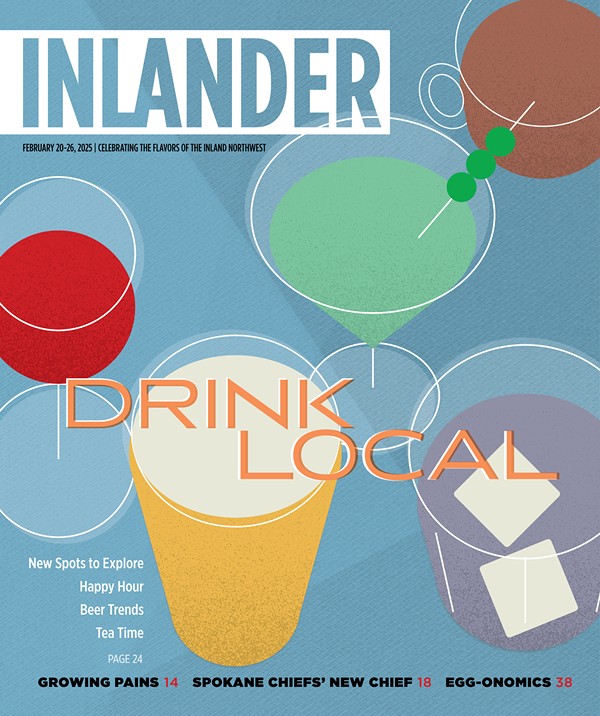Many stories begin with a door, some philosophical, some actual.
This one begins in Moscow, Idaho, a university town known for its sandal-wearing hippies and Christian missionaries. When four students were murdered last fall in this almost-rural Pleasantville, I received a call from the news desk at the New York Times to see if I'd be available to cover the story.
It wasn't my first assignment for them, but I still feel honored every time that call comes in, and that door opens once again. So I took it — like I had many others over the past decade — loaded my camera bags, and headed south to the Palouse, where I grew up, and where I began my journey as a photojournalist.
I've been chasing this job since I was a student in Pullman, Washington. In the ensuing years, the news industry has struggled to understand and react to the technological and social shifts we are all experiencing. While we journalists have supported one another through layoffs and reorgs, we did it in chat groups and posts on the same social media platforms that replaced our market share. Within 20 years, some of us traded the newsroom for cubicles at PR firms and marketing departments.
This was our best collective effort to balance our finances, families and skills in the new frontier. I found mine moonlighting between commercial photography and documenting my community for various national media. This offered a balance — one providing security and the other a continued purpose as an observer and storyteller.
Photojournalism always felt like it was made for me. Creating a visual entry point for a reader through poetic moments and beautiful light has drawn me to it since my first published photograph. Capturing a story within an image combines foresight with being present, and feels like magic when I can conjure it. In short, it's like no other job.
Though I never gave up on the pursuit, it did change from a career to a commission. The assignments still come sporadically, and when they do I rearrange my schedule around whatever a coastal editor finds interesting in our region that week. For these stories, a writer might fly out from NYC or D.C., but regularly these stories are written without ever stepping into the PNW.
As the eyes on the ground, I always felt my images helped those stories — written from the other ocean — retain an honesty that can only be captured by being there, and being from there. In the weeks after the four were found in their house, behind that door, the campus grieved, questions piled up, investigators retracted, students left, and the community of this agriculture college town grew fearful, then frustrated, then weary.
The story seemed like it would never be solved, and I was called on repeatedly in those months to return to Moscow to try to understand what was going on. But mostly just to look at that door.
Every time I returned, little had changed, other than the number of television crews live at the scene of the home rubbing elbows with the Real Crime TikTokers and the law enforcement standing guard. In a town like Moscow, it would be easy to recognize the outsiders, even without their cable TV press badges hanging against their tightly tucked shirts. At the memorial, grandstands had been erected to corral the gaggle of photojournalists. In 20 years of making photos, I had never been part of anything like it. Not during the NCAA finals or other tragic scenes, though photographing Rachel Dolezal came close. What felt like a community I knew was suddenly foreign and sensational.
I felt like I was part of the spectacle.
Some call this parachute journalism — reporters from elsewhere dropping into a community for a short time just to get the story. They're experts in courts or crime, or whatever happens to be at hand. They contextualize it, romanticize it a bit, possibly distill other reporting that's already been done, then add their own unique voice for a story that seems complete. For journalists who live in these areas, it can be frustrating.
While our national media has a role contextualizing local stories for the rest of the world, the parachuters don't have time to understand the nuances of the community they are covering. It is their versions of our stories, often very well written, that become the dominant story of record and how a community is seen and remembered. Sensationalism becomes necessary for a scoop, even for journalists who would otherwise never consider such tactics in their reporting. Meanwhile the rest of us watch our communities turn into the source of an everlasting red banner of breaking news.
Great journalism continues to be fostered within communities, albeit with new compromises. Even difficult storytelling like this very tragedy can be done with compassion and clarity — just look at Emma Epperly's intimate and compassionate stories in the Spokesman-Review about the families of the four students. This consistency is the work that only local journalists can do in communities. As smaller papers lose subscribers and scale down, more readers turn to national reporting — reporting often based on the groundwork laid by the ever-decreasing number of local journalists. As local papers shrink, those reporters are forced to compromise their diligence and coverage, which somehow reminds me of every game of Monopoly I played as a kid.
While I was at the university's vigil for the four students a month after their murders, a young woman near me held a candle illuminating the tears in her eyes. I quietly turned and made a few photos of her as she stared past me. She hadn't been approached by the dozens of reporters in attendance, but it turned out that she'd already been quoted in another national story a few days prior. She was kind as I apologized for the intrusion, but she and her peers who filled half the indoor football field all appeared exhausted. She mentioned that she might not return the next semester, emotionally drained by the tragedy and heightened fears across campus, surely. But if she felt anything like me, also from being constantly surveilled for emotion. It was the first time I felt like I was the parachuter, and I wondered if I had always been.
At one time newspapers were seen as savvy investments, essentially printing money on their daily presses for anyone who could afford to own one. Unfortunately, the same was never true for most of the people who worked there. Journalists have long been underpaid, a drawback we trade for its meaningfulness and purpose. It's been the economic and social shifts that have now changed the ways we work beyond the trimming of the payroll. Many simply stay in it until they can no longer afford to.
I'll admit it's cool to think of the throngs of people who see my work, but it is the thrill of every assignment as a door into the unknown that beckons. Connecting with someone, learning their story, and connecting our community with itself — that is the reward. It's our responsibility to honor that mission, not the obsession to be the first to report it.
Reporting on a community requires showing up. Being there builds relationships and trust between a paper and people, and in turn creates an openness to reading about topics we may not agree with or completely understand. We do not have any control over what stories will be told about us from the outside, but the ones we know of ourselves are what the rest of the stories will be built upon.
The consistency of the local journalism we have in the Inland Northwest is a special part of our community. Having two locally owned family newspapers in a city of our size and another right across the border, makes our region the rarest of birds. That doesn't mean they're the only version of the story, but they are ours, and still our most reliable and honest public square for ideas and culture.
As our news organizations continue to conglomerate with entertainment companies, and as we watch multiple news narratives run simultaneously across platforms to polarized audiences, please continue reading and supporting local journalists.
It's one of the last ways we can be sure that we are getting thoughtful coverage and commentary about the places where we live by those who live with us here. To hold onto that, we will need a collective act from a city that wants to know itself better. A city that reads itself.
I haven't been back to the door in a few months. The reporting has continued as we wait for the trial to begin (and potentially bring the country's attention back to Moscow's doorstep). I've seen the images I made months ago used in story updates, and think pieces, much like this one. As the spectacle subsides and our community is allowed to grieve, some of us must atone for and reconcile our participation.
I received another call when the suspect was arraigned in Moscow, but I didn't take the assignment. It was the first time in more than a decade that I'd passed on the honor. It was also the first time it didn't feel like it was for me. ♦
Rajah Bose is a photographer and visual storyteller. He has worked as a photojournalist for two decades and his work has appeared widely. He co-directs an art and production company with his partner, Ellen Picken. His work can be seen at RajahBose.com.

